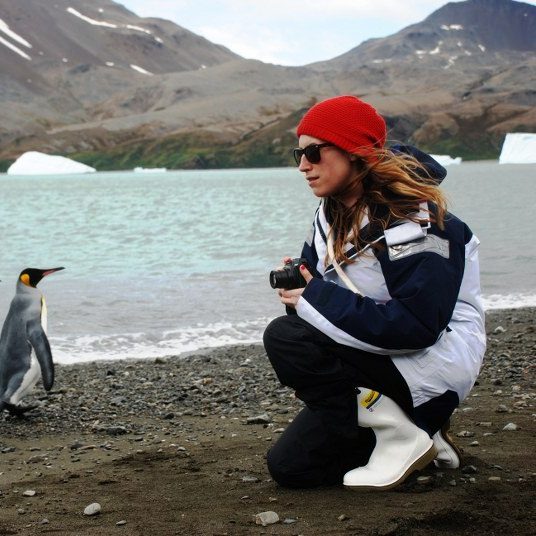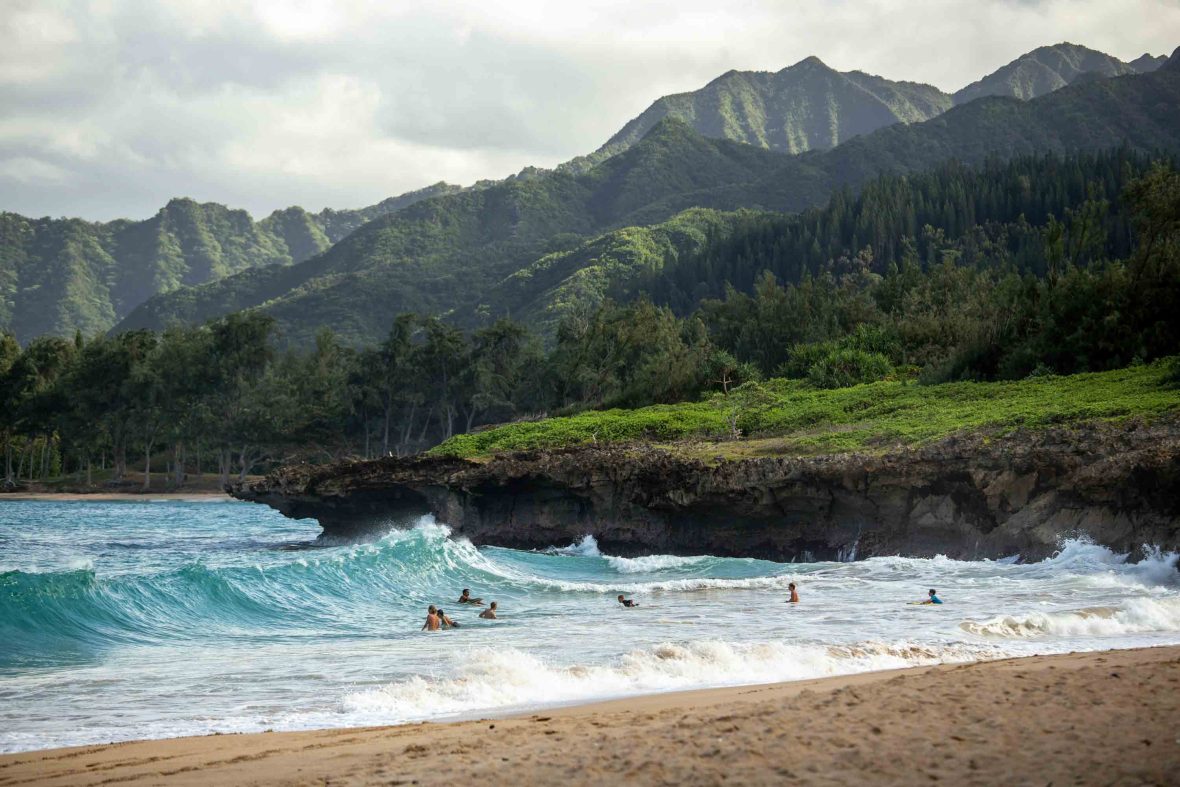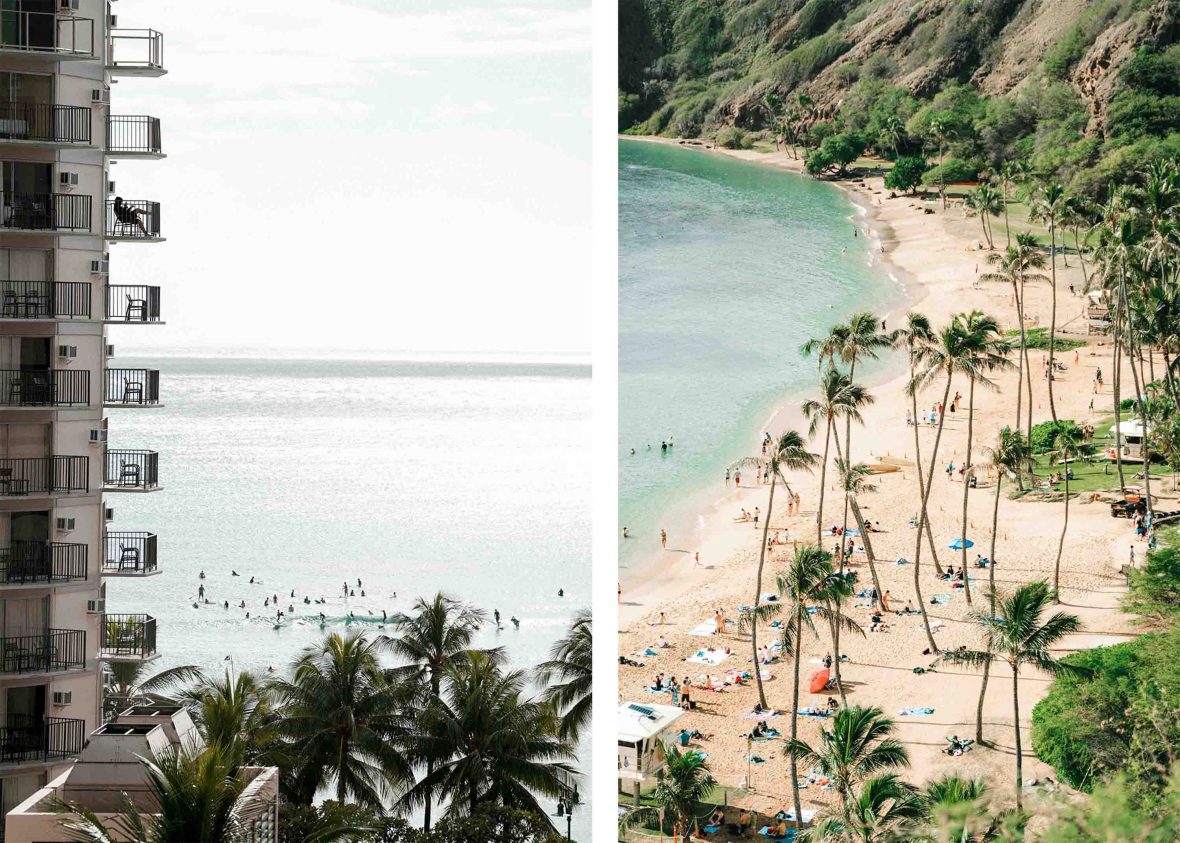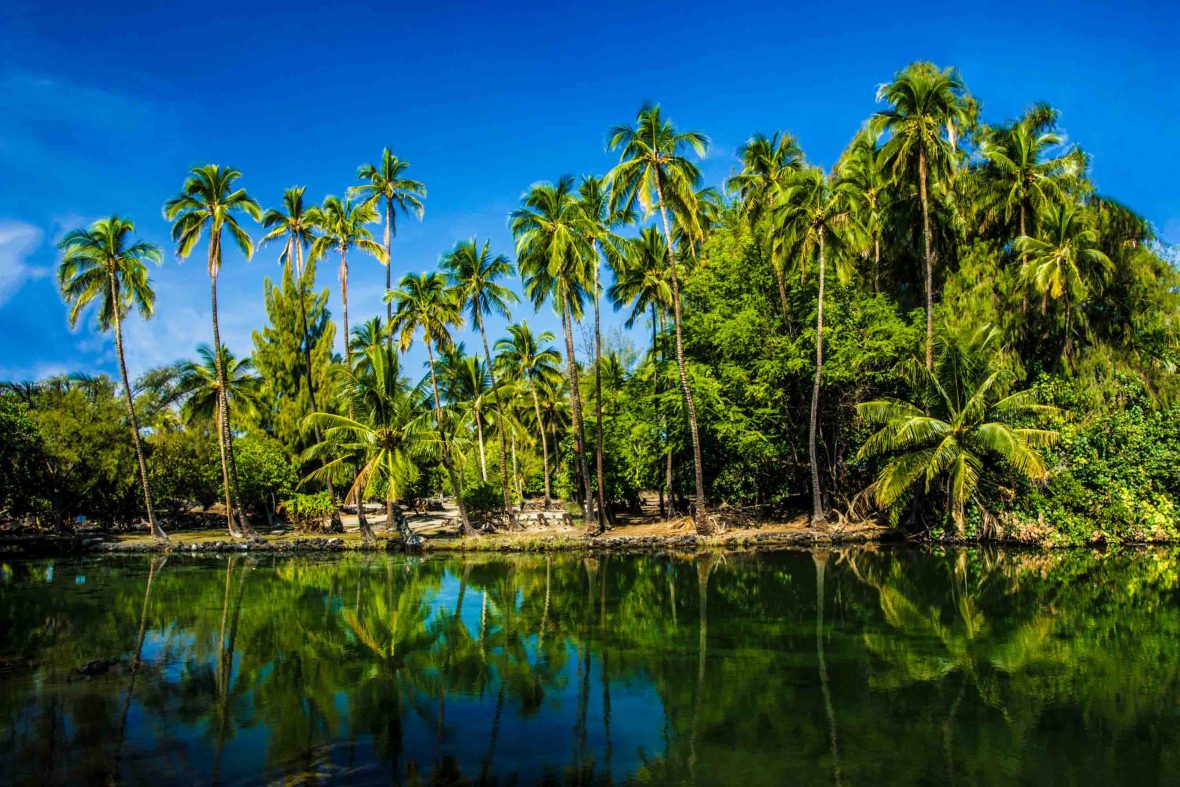
Dream destination or no-go zone? In light of huge inequality, unfettered development and locals being priced out of the housing market, it’s time to rethink how we approach one of the world’s favorite travel destinations, writes Jo Stewart.


Dream destination or no-go zone? In light of huge inequality, unfettered development and locals being priced out of the housing market, it’s time to rethink how we approach one of the world’s favorite travel destinations, writes Jo Stewart.
I’m convinced one of the greatest feelings in the world is floating in the ocean—and there’s no better place to do it than Hawaiʻi. Bobbing up and down with the rhythms of the sea, I’m at peak relaxation. The sun is shining, and the worries and responsibilities of home are far away. There’s even a Mai Tai and soft-as-a-cloud hotel bed in my near future. Life is as good as it gets. But all this luxury and relaxation for flown-in foreigners like me comes at a steep cost. Just ask the people of Hawaiʻi.
From viral videos of beachgoers chasing endangered Hawaiian monk seals, to tech billionaires buying land to fulfill their doomsday bunker and cattle farming fantasies, the impact that interlopers have on Hawaiʻi is getting long-overdue airtime. And for every reason to visit (snorkeling with turtles, hiking to waterfalls, happy hour cocktails) there’s a reason not to (overcrowding, water shortages, housing issues). Regenerative tourism promises to recalibrate the islands’ relationship with visitors, but reaching a point of tangible change will be a long, drawn-out process involving multiple stakeholders and layers of bureaucracy.
We’re talking about a systemic shift—not a pithy marketing campaign from the tourism board. With more locals voicing concerns about the impacts of overtourism, some corners of the travel industry are beginning to ask: Should we visit Hawaiʻi at all?

“We went from six million tourists in 2009 to 10 million in 2019,” says Dr Jerry Agrusa, professor at the School of Travel Industry Management at the University of Hawaiʻi’s Shidler College of Business in Mānoa. “That’s a huge increase. Every day in Waikīkī, there’s about 80,000 tourists.”
Over the decades, the tourism juggernaut has grown to represent the largest single source of private capital for Hawaiʻi’s economy. In 2019, visitor spending hit USD$17.75 billion, a sum that directly supports 216,000 jobs. Each year between 2015 and 2019, an average of 48,682 Native Hawaiians (almost 20 percent of total workers) were employed in tourism intensive industries.
Jerry has lived in Hawai’i since 1989 and has spent decades researching the impacts of tourism. He shares that staying in hotels instead of Airbnbs or other short-stay rentals—which are fueling resentment among locals as rental prices skyrocket—will help to avoid contributing to Hawaiʻi’s housing crisis. “A normal person can’t buy a home,” says Jerry. “There’s 27,000 short-term rental units in Maui. It’s a disaster.”
A barometer for gauging tourism impacts, Hawaiʻi Tourism Authority’s Resident Sentiment Analysis tracks local attitudes towards tourism. When asked if tourism brought more benefits than problems, 80 percent of respondents agreed in 2010. By 2023, only 52 percent agreed.
With more than half of Hawaiʻi’s short-term rentals owned by non-residents (and 27 percent of short-term rental owners owning an astonishing 20-plus units) much of the revenue generated via short-stay accommodation doesn’t stay in Hawaiʻi. According to Jerry, tourist spending habits are also warped by their accommodation choice—with tourists who opt to stay in an Airbnb or similar spending far less money on eating out, for example. “The average person who stays in a hotel for seven days eats out 21 times, but in an Airbnb for seven days, they eat out an average of four times,” he says.
Jerry points out that while tourism isn’t new to Hawaiʻi, the scale and way people are traveling has changed dramatically in the last decade. Previously, tourists mostly stuck to areas where there were hotels. Now, tourists are also parking on your street and partying in the house next door. “A lot of tourists now want to go where the locals are, but the locals don’t want them there,” says Jerry. “Now you’ve got GPS where people can find ‘secret’ beaches or hiking trails.”

A barometer for gauging tourism impacts, Hawaiʻi Tourism Authority’s Resident Sentiment Analysis tracks local attitudes towards tourism. When asked if tourism brought more benefits than problems, 80 percent of respondents agreed in 2010. By 2023, only 52 percent agreed.
So how to turn this around? Jerry’s research into regenerative tourism indicated that residents are keen for tourists to experience activities with a cultural element, such as working on a taro/kalo (root vegetable) farm, helping restore ancient loko kuapā/fishponds, and removing invasive species from hiking trails. Research also reveals that many visitors are beginning to view Hawaiʻi as more than just a sun, sea and sand destination—with surveys revealing strong interest in regenerative and sustainable experiences.
Inroads have been made to encourage visitors to give back. From cleaning up Maui’s coastline with the Pacific Whale Foundation to volunteering at the Hawai’i Foodbank in Honolulu and planting native koa trees on the north shore of Oʻahu, the Mālama Hawai’i program makes it easier for tourists to volunteer their time in the community during their stay.
Visitors can also have a positive impact by avoiding activities that channel funds into off-island corporate behemoths. From sailing aboard Kamoauli, a traditional double-hulled, Polynesian-built canoe run by a social enterprise to learning how to make sustainable flower crown leis using biodegradable materials, there are many small businesses sharing and celebrating Hawaiian culture.
“A lot of these big corporate entities have come to the islands,” says Keola Ryan of North Shore EcoTours. “Yes, they generate revenue, but a lot of that revenue leaves the islands and goes back to where those corporations are based.”
Born and raised on the island of Oʻahu, Keola runs North Shore EcoTours alongside his wife, Tasha. On the day I visit, I join Keola on an electric ATV adventure along the farm roads of Oʻahu’s North Shore, although the small eco-tour company also runs guided hikes and community clean-up days to restore the environment.
A hula practitioner and teacher (kumu hula) who holds a master’s degree in Hawaiian Studies, Keola also teaches at the Kamakakuokalani Center for Hawaiian Studies at the University of Hawaiʻi at Mānoa. Sharing an authentic representation of Hawaiʻi with visitors is important to Keola, who says that the tourism industry has promoted “horrible representations” of Hawaiian culture for too long. “So when visitors come to Hawaiʻi, I tell them to do things that give them a better understanding of Hawaiʻi from a Hawaiian standpoint,” he says.
Keola recommends visiting Bishop Museum and Iolani Palace, noting that for a long time there were efforts to suppress vestiges of Hawaiian culture and history that didn’t suit the entertainment and travel industries. “They allowed hula on the stage to entertain the visitors… but they certainly didn’t allow other cultural practices or traditions,” he says.” “Hawaiian culture was heavily exploited.”
Far from being a heavy-handed history lesson, Keola shares his culture in an easy-going, fun way as we whiz along farm roads on our electric ATVs. As he points out geological landmarks and shares the Hawaiian names of the tropical fruit trees we pass, this is as much an open-air classroom on wheels as it is an exhilarating morning mucking around on four wheels in the sunshine.
As for whether or not tourism can ever be truly regenerative and beneficial for locals, Keola believes so, but concedes it will take time. These days, it’s hard to miss the responsible travel memo when in Hawaiʻi. Hawaiian Airlines shares cultural information via inflight videos. Go hiking and you’ll see signs to stay on the trail, be mindful of native plants and give wildlife space.
Despite this, you’ll likely see tourists jumping fences and trampling fragile habitats to take selfies. “You can’t force anyone to listen,” says Keola. “You’re not going to be able to get them all. But if there’s a concerted effort to change people’s understanding of what Hawaiʻi is, then I believe it would make a difference.”
“Many people who rent an Airbnb will go straight from the airport to Costco, load up all the food for the week so they don’t have to go out… but if you really want to help, then go to restaurants. Costco is doing fine.”
- Riley Coon, sailing business owner
He explains that industry leaders and community members have been discussing how to reinvent tourism to benefit local communities, instead of continuing the exploitative model that’s dominated by foreign-owned corporations.
“I understand the underlying tensions regarding the way that tourism has operated in Hawaiʻi,” he says. “But at the same time… travel isn’t going away. It’s an amazing, educational, eye-opening experience. There’s a lot of value in travel. We just have to ensure we’re traveling responsibly.”
In Maui, it’s more important than ever to support locally owned businesses considering the lingering economic impacts the island is experiencing in the wake of the devastating 2023 fires that killed more than 95 people and displaced thousands.
As co-owner of family-owned sailing business Trilogy Excursions, Riley Coon has shown thousands of visitors the beauty of Maui via snorkeling trips and sunset cruises along the coastline he knows so well. After snorkeling the spectacular reefs of the crescent-shaped Molokini Crater, I dig a little deeper into how visitors’ actions impact locals.
Riley shares that shopping local is paramount if you want to support the community as it recovers from the wildfires. And he’s not alone. Visit any of Maui’s townships—from Pā’ia on the north coast to Makawao in Upcountry Maui—and you’ll see the ‘shop local’ mantra reiterated on shop front windows and bumper stickers.
“If you’re going to buy something, don’t buy it at Target, right? Do a little bit of homework… and go to a local shop,” says Riley. “Many people who rent an Airbnb will go straight from the airport to Costco, load up all the food for the week so they don’t have to go out… but if you really want to help, then go to restaurants. Costco is doing fine.”
Many tourists have avoided the island as it heals and rebuilds. Yet, this sharp drop in visitation has caused a huge loss of employment for residents working in hospitality and tourism, which accounts for more than 50 percent of jobs on the island.

It’s a strange feeling to holiday amid such heartbreak and hardship. While swimming in the pool of the wellness center I’m staying at, I meet one of the many displaced wildfire survivors now living in temporary accommodation.
She shares her story of survival as we float in the shady side of the pool, enjoying the gentle breeze that takes the edge off the afternoon sun. Homeless and living with a disability, she hasn’t been able to find a rental within her modest budget. Quite simply, she has nowhere to go. Her story stays with me long after I return home.
While visitors need to be mindful and avoid Lahaina, the epicenter of the fires, Riley shares that people bringing empathy, kindness and generosity are welcome. “Bring your aloha,” he says. “We have so many visitors bringing their time, their talent and treasure. Be generous with the activities you’re doing and tip your hosts … those are some of the best ways you can support Maui residents. Being generous like that is helping households immediately… That’s aloha, right?”
***
Adventure.com strives to be a low-emissions publication, and we are working to reduce our carbon emissions where possible. Emissions generated by the movements of our staff and contributors are carbon offset through our parent company, Intrepid. You can visit our sustainability page and read our Contributor Impact Guidelines for more information. While we take our commitment to people and planet seriously, we acknowledge that we still have plenty of work to do, and we welcome all feedback and suggestions from our readers. You can contact us anytime at hello@adventure.com. Please allow up to one week for a response.
Jo Stewart is an Australian travel writer who lives in Melbourne, but spends an inordinate amount of time at airports. She has visited all seven continents and is comfortable mixing it up at both ends—and everywhere in between—of the travel spectrum.
Full Bio






Can't find what you're looking for? Try using these tags: